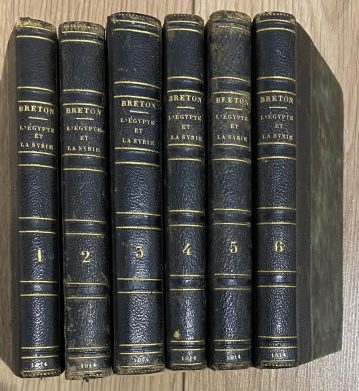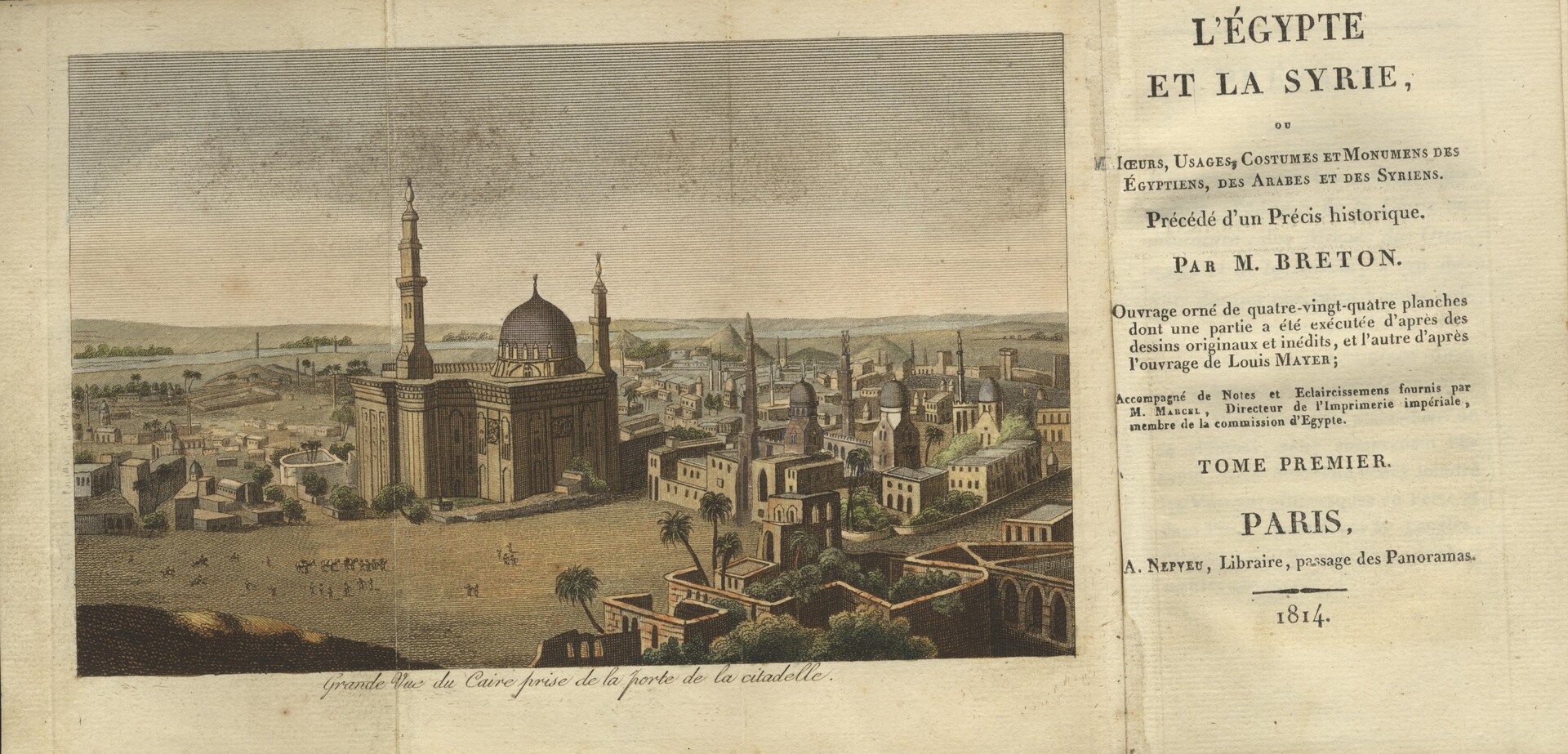L’Egypte et la Syrie, ou mœurs, usages, costumes et monuments des Egyptiens, des Arabes et des Syriens. Précédés d’un précis historique. SIX VOLUMES.
Breton de La Martinière, Jean Baptiste Joseph.
Synopsis
FIRST ORIGINAL EDITION. A superb work depicting costumes, crafts and landscapes in the Holy Land and Egypt. The double-page plates are mostly reduced versions of the plates in Mayer’s Egypt. This work is one of many showing the renewed interest in the Near East after the Napoleonic invasion of Egypt. Known above all as a stenographer, both of parliamentary debates and of criminal trials, Breton de la Martinière also produced similar works on China and Russia. For his book on Egypt and Syria, however, he enlisted the help of Jean-Joseph Marcel, a pupil of Louis-Mathieu Langlès. Marcel, who had taken part in the publication of Langlès’s “Recherches Asiatiques”, had been among the scholars who accompanied Napoleon to Egypt in 1798. He was subsequently appointed director of the national printing press. He supplied Breton de la Martinière not only with information but also with drawings he had made himself in the course of his visit to the east and which Breton de la Martinière added to those of Luigi Mayer published in England over ten years earlier. In his preface Breton de la Martinière praises the achievement of the French in Egypt “où le nom français a laissé de si glorieux souvenirs”. The text, far superior to that in the English edition of Mayer’s Views, gives information about the customs, the religions and the antiquities of the area but also provides details about its more recent history and the French occupation. The tone is strongly anti-British’ (Alastair Hamilton, Europe and the Arab world, p. 156).
Bibliographic references: Atabey 148; Blackmer, 200; Gay, 1956; Hilmy I, 87; Colas I n° 438; Brunet I-1226; Quérard I-505; Rohricht 1631.








